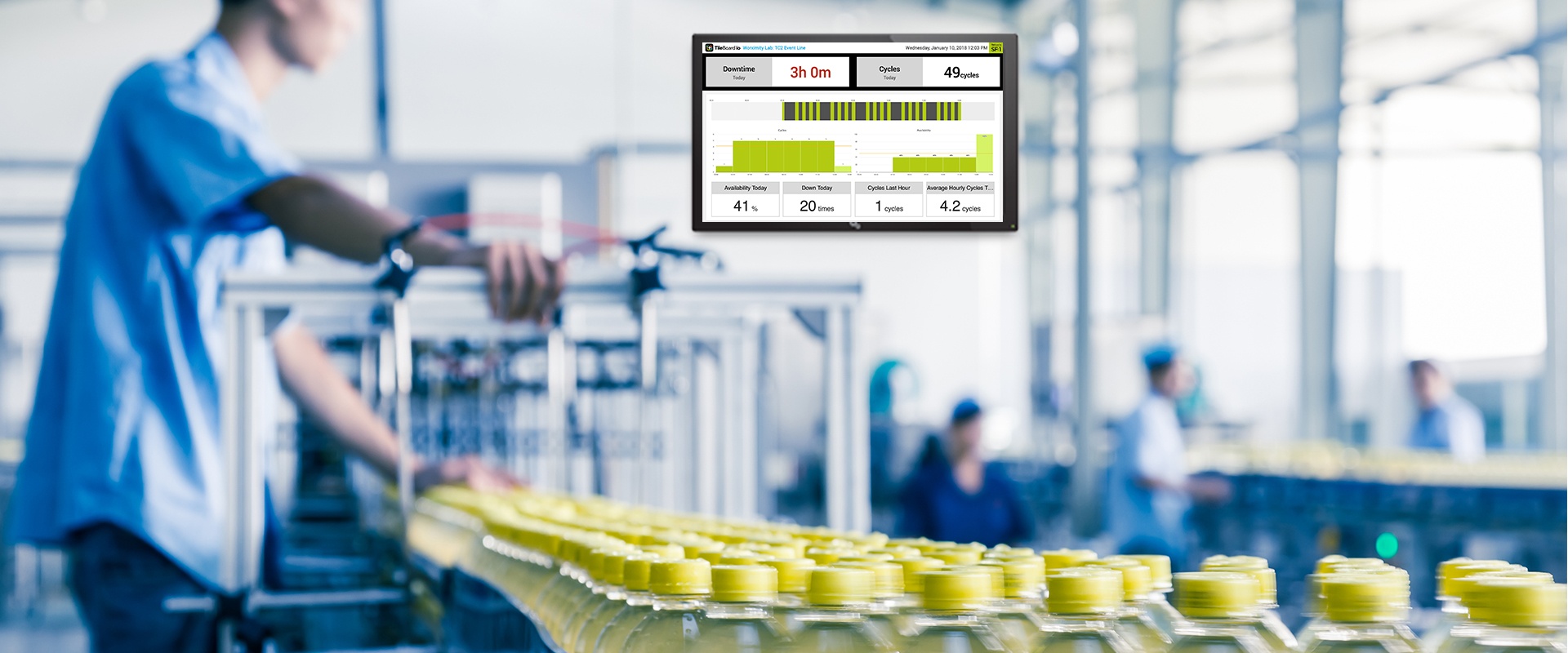Consumer buying habits have changed since the onset of the COVID-19 virus. Individuals are eating out less frequently, buying more staples, and even hoarding certain food and paper products. Processors that respond effectively to this rising challenge will not only build improved customer appreciation and loyalty but also establish greater access to market share. Worximity can help processors meet today's challenges. As the leading provider of real-time performance monitoring and analysis technology, Worximity can help increase throughput, improve on-time deliveries, and respond to market changes.
Effective throughput is an essential measure of how well a plant can satisfy customer demand. Regardless of the productivity of any internal processing line, failure to meet actual plant throughput goals means customer orders may not be delivered as promised. Missed throughput targets, then, become a source of dissatisfied customers and potential loss of market share.
Throughput Defined
Throughput Time
In many plant environments, throughput is described in terms of time, meaning the time required for material to move through the plant from beginning to end (i.e., into finished goods). The formula for throughput time is below.
Throughput time equals the sum of:
- Processing time: the time a unit is worked on to convert from raw material to a completed unit
- Wait time: the time the unit waits before processing, inspection, or moving
- Move time: the time it takes for the unit to be moved from one step to another
- Inspection time: the time it takes for the unit to be inspected for quality
Throughput Volume
Because satisfying customer demand is a primary objective of manufacturing, effective plant throughput in terms of units is a useful metric. This measure is the actual number of good units produced by the plant during a given period (e.g., per shift).
How to Improve Throughput
If we think of throughput time as comprising value-added and non-value-added time, we can see that only the processing time is a value-added activity. The other variables are non-value-added steps and are considered wastes. Therefore, reducing any of the non-value-added steps (wait, move, and inspection times) increases productivity and improves throughput. In many manufacturing operations, non-value-added time can amount to as much as 90 percent of total throughput time. Because non-value-added time in most manufacturing processes is so high, the opportunities for significant improvements are considerable.
For example, Voltigeurs Farm, a major poultry processor, partnered with Worximity Technology to implement performance monitoring and productivity improvements. Utilizing Worximity's Smart Factory analytics and reducing non-value-added activities, Voltigeurs was able to increase production throughput by 90,000 units per month. This improvement represents significant savings and increased profitability.
Analyze the Three Non-Value-Added Activities
1. Wait Time
By far, the biggest portion of non-value-added time in most operations is wait time. In general, this is true across most manufacturers. As a result, it makes sense to focus improvement efforts on reducing wait times at every step across the factory. The following are some areas that can be considered when analyzing wait times:
- Ensure the value-added processes are balanced
- Consider processing materials in batches
- Develop improvements in machine speeds and quality of outputs
2. Move Time
Moves can also represent a significant portion of non-value-added activities. Throughput improvements can be achieved by reducing the frequency, time, and distance parts and materials must move through the plant. Mapping the process flows, minimizing material handling, and speeding up processing can help reduce move times.
3. Inspection Time
Improving process output quality is a primary way to reduce inspection times. Also, automating the inspection process, inspecting as the product is moving, and reducing manual handling during inspection can help reduce time spent checking quality.
The Smart Factory Analytics Advantage
Worximity Technology offers a full suite of in-line productivity monitoring and analysis equipment to help manufacturers and processors maximize throughput. Using Worximity's TileConnect equipment monitoring sensors, production data is collected in real time and sent to the cloud. Then, Smart Factory analytics calculates important KPIs, including OEE and throughput metrics. These measures are displayed on dashboards (TileBoards) placed throughout the factory so employees can monitor process performance.
As improvements are made to throughput components such as wait times, results show up in values on Worximity's TileBoards. The impact of reducing wait, move, and inspection times results in improved quality, faster order fulfillment, and improved customer service. To discuss how Worximity can help your factory achieve higher levels of throughput and profits, call today at 844-303-8453 or visit our website to schedule a demo.

















